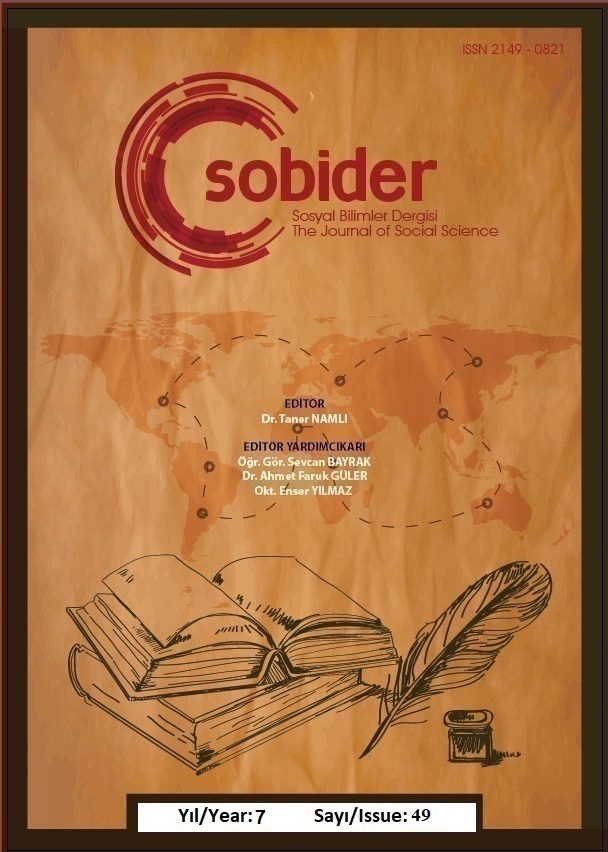PAUL AUSTER’IN CAM KENT ADLI ESERİNDEKİ ANIŞTIRMALARIN LEPPIHALME’NIN STRATEJİLERİ ÇERÇEVESİNDE ÇEVİRİSİ
Author :
Abstract
Metinlerarasılık bağlamında, anıştırmalar oldukça önemli bir yer kaplamaktadır. Çünkü, çevirmenlerin kültürel bağlamı bilmeleri ve metnin metin dışı ilişkilerinin farkına varmaları gerekmektedir. Bir kültürel ve metinlerarası etmen olarak anıştırma çeviri sürecinde zorluklara neden olmaktadır. Kaynak metinde bulunan anıştırmaların işlevleri ve çağrışımları erek metinde mümkün olduğunca yansıtılmalıdır. Bu nedenle, çevirmenlerin uygun çeviri stratejilerini benimsemeleri gerekmektedir. Bu çalışmanın amacı, anıştırmalar açısından oldukça zengin olan, Paul Auster’ın Cam Kent adlı eserindeki anıştırmaların Türkçeye çevirisinde benimsenen çeviri stratejilerini incelemektir. Bu bağlamda ilk olarak, Cam Kent’te yer alan anıştırmalar Leppihalme’nin (1997) sınıflandırmasına göre incelenecektir. Daha sonra, çevirmenleri metinlerarası anıştırmaları nasıl ele aldığı ortaya konacaktır. Bu nedenle, kaynak metnin iki farklı Türkçe çevirisi ele alınmış, anıştırmalar kaynak metinden rastgele seçilmiş ve çevirileri karşılaştırılmıştır. Anıştırmaların neyi anlatmak istediği detaylıca açıklanacak ve çevirmenlerin benimsediği stratejiler de yine Leppihalme’nin (1997) önerdiği stratejiler çerçevesinde analiz edilecektir.
Keywords
Abstract
Within the framework of intertextuality, allusion must be given utmost importance, because the translators need to have an extensive cultural background and an awareness of the extratextual connections of the text. Allusion, as a cultural and intertextual element, poses important problems in translation. The function and connotation of the allusions in the source text must be maintained in the target text as much as possible. Therefore, translators need to adopt the most appropriate translation strategies. This study aims to analyze the strategies adopted in the translation of allusions in Paul Auster’s City of Glass, which is a postmodern detective fiction story having noticeably rich allusions. Firstly, intertextual allusions will be analyzed in both English and Turkish versions of Paul Auster’s City of Glass in line with Leppihalme’s (1997) category of allusions. Then, how the translators handled the translation challenges of intertextual allusions in Paul Auster’s City of Glass will be revealed. Therefore, two Turkish translations of the source text have been chosen and several allusions have randomly been picked from the source text and their translations have been compared. The references made through the allusions will be explained in detail and the strategies of the translators will be analyzed in line with the strategies proposed by Leppihalme (1997).
Keywords
- Abrams, M.H. & Harpham, G.G. (2012). A glossary of literary terms (10th ed.). Boston: Wadsworth.
- Auster, P. (2004). New York Üçlemesi- Cam Kent. (İ. Özdemir, Trans.). İstanbul: Can
- Auster, P. (2009). Cam Kent. (Y. Eradam, Trans.). İstanbul: Metis Yayınları
- Auster, P. (2011). The New York Trilogy. UK: Faber and Faber.
- Bahrami, N. (2011). Strategies used in the translation of allusions in Hafiz Shirazi’s poetry. Journal of Language and Culture, Vol. 3(1), pp. 1-9.
- Irwin, W. (2001). What is an allusion. The Journal of Aesthetics and Art Criticism, 59(3), 287– 297.
- Kristeva, J. (1969). Semeiotiké: Recherches pour une sémanalyse. Paris: Seuil.
- Lefevere, Andre. (1992). Translating Literature: Practice and Theory in a Comparative Literature Context. New York: The Modern Language Association of America.
- Leppihalme, R. (1997). Culture bumps: An empirical approach to the translation of allusions topics in translation. England: Multilingua Matters.
- Montgomery, M. (2000). Ways of reading: advanced reading skills for students of English literature. London: Routledge.
- Quinn, E. (2001). A dictionary of literary and thematic terms (2nd ed.). USA: Facts on File.





